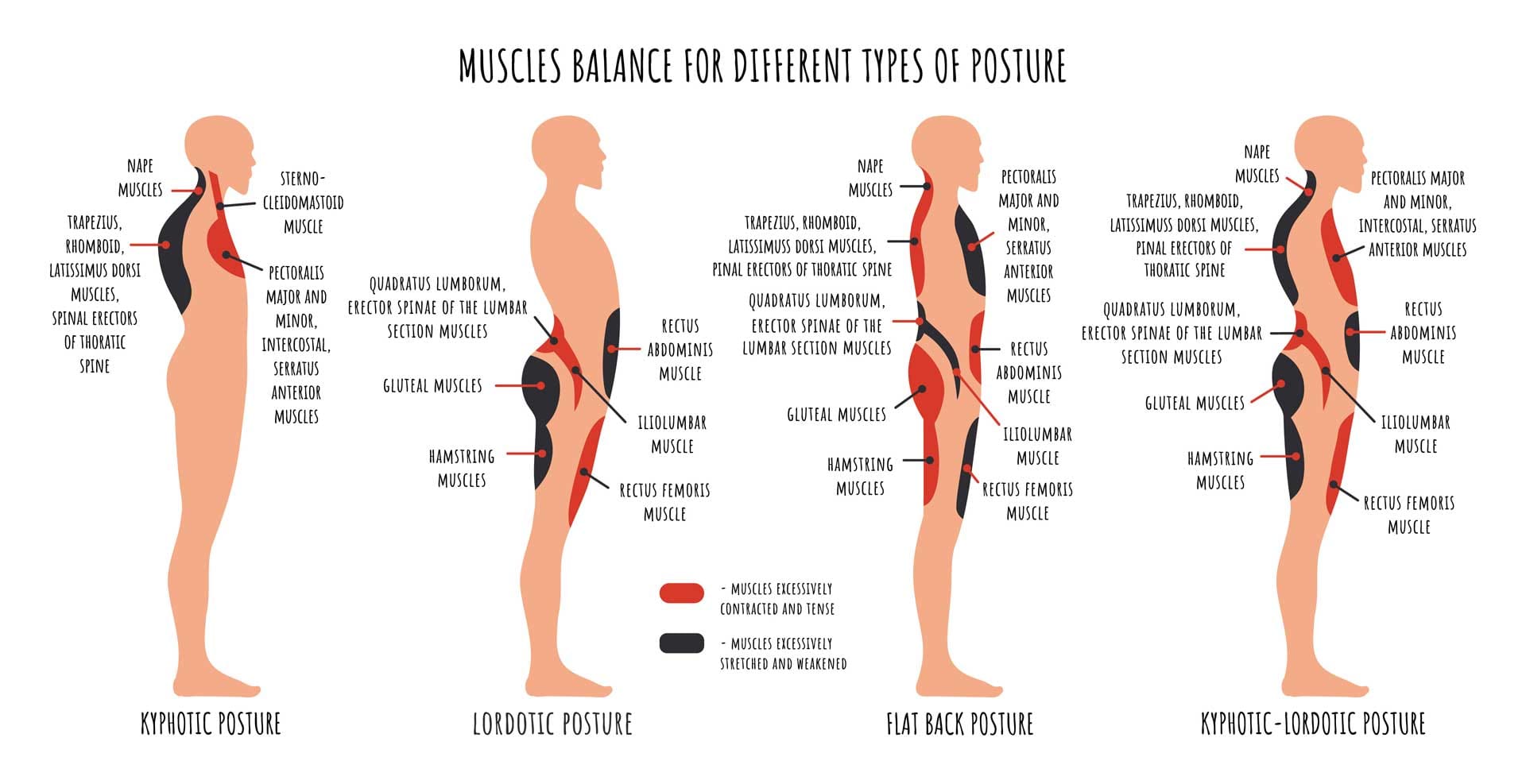Discover how osteopathic treatment can reduce pain, boost energy, enhance mobility, and improve body confidence by correcting postural imbalance.

Correcting postural imbalance is not simply about standing up straight; it’s about restoring the body’s natural alignment to promote optimal function and overall well-being. In today’s sedentary world, many of us develop habitual slouching or uneven weight distribution, which can lead to chronic discomfort and reduced quality of life. Osteopathy provides a safe and evidence-based approach to addressing these issues. By focusing on the benefits of correcting postural imbalance, you can experience less pain, better breathing, improved mobility, and a greater sense of well-being under the care of a qualified osteopath.
Postural imbalance occurs when the body’s alignment deviates from its ideal position—often due to repetitive activities, muscular weakness, or injury. Over time, these deviations place disproportionate stress on muscles, joints, and connective tissues. Consequently, this can manifest as backache, neck tension, headaches, and even digestive discomfort. Moreover, a misaligned posture can impair breathing mechanics, leading to fatigue and reduced energy levels.
Osteopaths are regulated healthcare professionals, registered with the General Osteopathic Council (GOsC) since 1993. They employ a combination of manual therapies, exercise advice, and health management strategies tailored to each individual’s needs. Importantly, the UK Advertising Standards Authority (ASA) and the Committee of Advertising Practice (CAP) accept that osteopathy can legitimately claim to treat a range of musculoskeletal conditions—such as joint pains, backache, and tension headaches—when presented responsibly. Therefore, you can trust that osteopathic care adheres to the highest standards of safety and efficacy.
Firstly, one of the most immediate and noticeable benefits of postural correction is the alleviation of pain. When the spine and joints are correctly aligned, undue stress on muscles and ligaments is reduced. Osteopathic techniques—such as joint articulation, soft-tissue massage, and gentle manipulation—help restore mobility and ease chronic muscle tension. As a result, sufferers of back pain, neck stiffness, and headaches often report significant relief after just a few sessions.
Secondly, a balanced posture optimises the function of the respiratory diaphragm by allowing complete expansion of the ribcage. Conversely, slouched or kyphotic postures compress lung capacity, which can contribute to shallow breathing and fatigue. Poor posture has been shown to impede lung function and make breathing more effortful, CSP. By realigning the thoracic spine and releasing tension in the surrounding musculature, osteopathic treatment can enhance diaphragmatic breathing. Consequently, you may experience increased oxygenation, greater stamina, and a natural energy boost throughout the day.
Moreover, corrected posture facilitates smoother, more efficient movement patterns. When joints sit in their optimal positions, range of motion improves, and the risk of injury decreases. Osteopaths often integrate tailored exercise programmes to strengthen postural muscles—such as the deep spinal stabilisers and gluteal group—further supporting long-term mobility gains nhs.uk. Therefore, everyday activities like bending, lifting, and walking become more comfortable and less taxing on the body.
In addition to physical gains, improving posture can have a profound impact on mental health and self-perception. Research suggests that maintaining an upright posture is associated with a higher mood, better stress resilience, and increased self-confidence. For instance, engaging in physical activity that focuses on alignment and breathing not only benefits the body but also releases endorphins, lifting one’s mood and bolstering body confidence. Thus, by investing in postural correction, you nurture both physical and psychological well-being.

The ASA requires that health-related claims be substantiated and not misleading. Accordingly, MHV Clinic adheres to these standards by only claiming the benefits of osteopathy that are supported by evidence and regulation, as endorsed by the ASA. We avoid overstatement, focusing on recognised musculoskeletal outcomes such as pain reduction, improved mobility, and enhanced function. By doing so, we ensure compliant, trustworthy communication that empowers you to make informed decisions about your health.
Q: Is osteopathy safe?
Yes. Osteopaths complete rigorous training and are statutorily regulated by the GOsC. Treatment plans are carefully tailored to individual health needs and risk profiles, ASA.
Q: How many sessions will I need?
The number varies based on the severity and duration of your postural issues. Typically, clients begin with 3–6 sessions, after which maintenance treatments can be scheduled as needed.
Q: Can I combine osteopathy with other therapies?
Absolutely. Many patients integrate osteopathy with physiotherapy, Pilates, or yoga for a holistic approach to posture and movement.
Q: Will correcting my posture prevent future problems?
While no therapy can offer a cure-all guarantee, correcting postural imbalance reduces undue stress on joints and tissues, thereby lowering the risk of recurrence and contributing to long-term musculoskeletal health.

Don’t let poor posture dictate your quality of life. Whether you’re struggling with chronic discomfort, fatigue, or want to feel more confident in your body, osteopathy offers a proven pathway to lasting change.
Book your consultation at MHV Clinic today to discover how the benefits of correcting postural imbalance can transform your health—naturally and effectively.